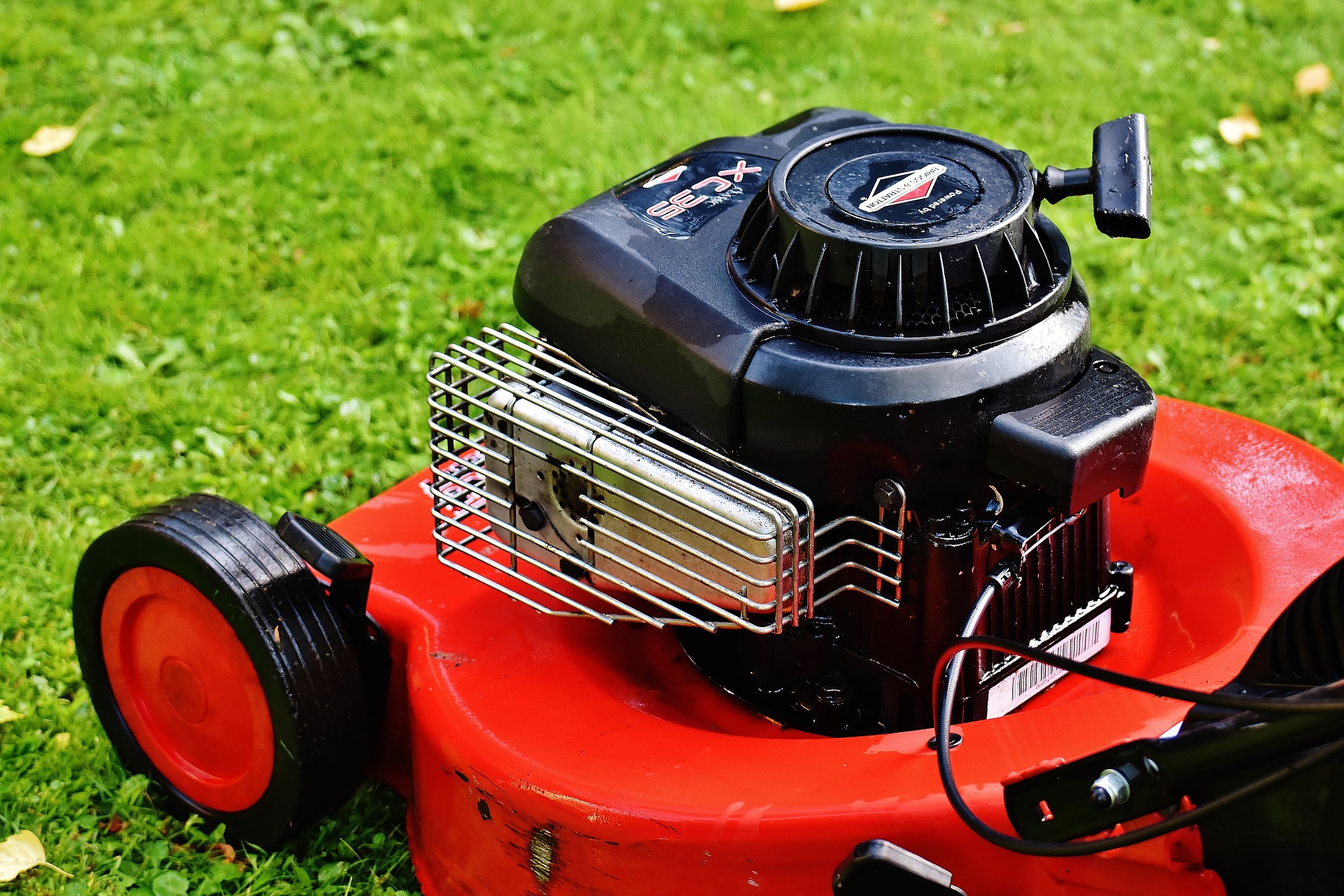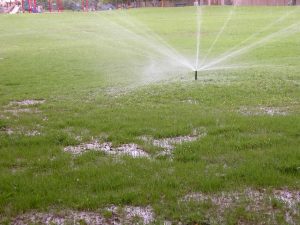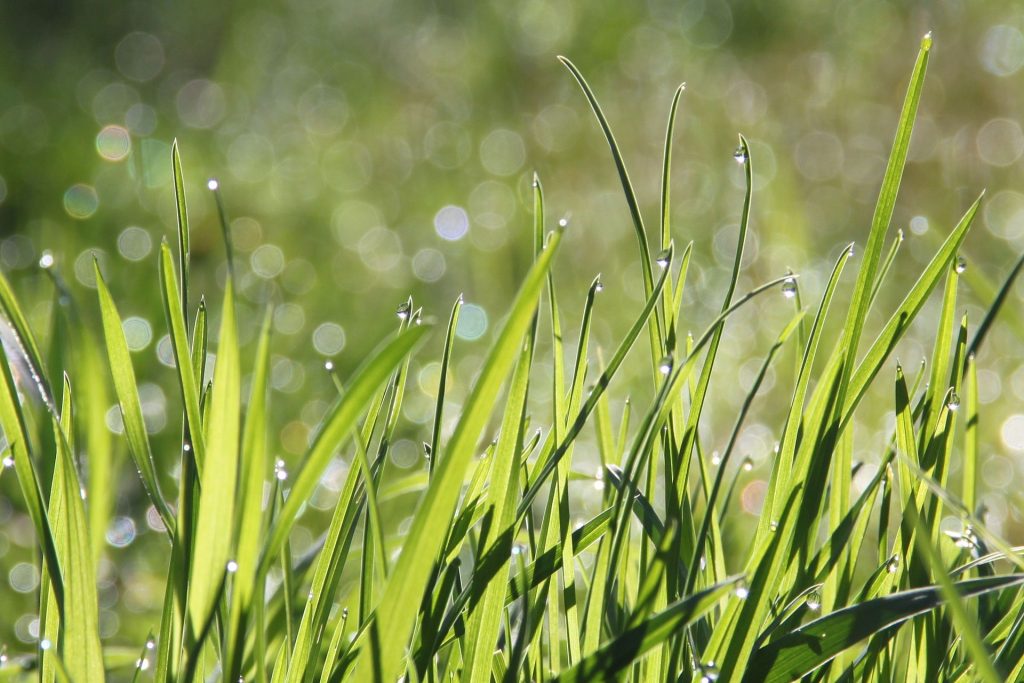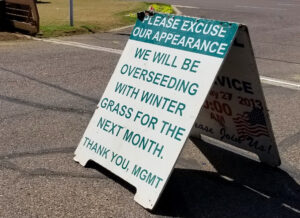To Overseed or NOT to Overseed…

Most Americans love lush, green lawns, and have shown that they are willing to do whatever it takes to have them. Nowhere is this act of defiance against nature and common sense more obvious than in the Arizona desert, especially in the fall when the ritual of winter grass activities begins! You’ll hear the whirring of the lawnmowers and see the dust in the air as the sprinklers start active duty to water multiple times each day.
But keeping a green, attractive lawn isn’t a simple task any time of year. Grass doesn’t just grow where there is bare ground as it does in the Midwest or back east where they have ample rainfall to keep it green. In the low desert, you have to build up the soil, select the proper varieties of grass, and provide careful maintenance that includes weed control, fertilizing, proper mowing, edging, dethatching, and more.
And while Bermuda thrives in our summer heat, around mid-November to December, this summer grass will go dormant turning a nice shade of golden yellow… ah, blonde… OK, does pumpkin latte sound any better? In fact, our partner, the City of Scottsdale, produced a fun video to make the point of embracing that seasonal color change:
Here’s the ‘more‘ part mentioned above when talking about maintenance. Overseeding with ryegrass in the fall equates to a lot more work and money to keep the lawn green year-round. You’ll need to purchase seed, scalp the grass, then water for seed germination. The seeding activity and mowing all winter also generates added waste to the landfills. Water use? We thought you’d never ask.
How Much of Our Scarce Resource is Needed for Grass?

These water use estimates provided are based on how much water is needed to keep grass healthy. It does not take into account the inefficiencies of sprinkler systems like broken heads, water runoff, or poor irrigation programming.
For basic water needs, it takes the equivalent of 6.5 feet of water applied to the surface to grow your grass year-round (reminder, we average 8 inches of rain each year). The supplemental water needed adds up to a whopping 35,000 gallons for every 1,000 square feet – that’s 1.5 million gallons per acre for HOAs or commercial properties with large turf areas. Water needed just for germinating the ryegrass and watering it throughout the winter season is about 8,000 to 10,000 gallons of that total for every 1,000 square feet and about 350,000 gallons every acre. In contrast, dormant Bermuda only needs to be watered once a month from November to February – even less if we get winter rains.
Currently in 2023, the Colorado River Basin (one of our water sources for the Valley) still suffers from the consequences of over two decades of severe drought, a hotter and drier climate, and the long-term imbalance between supply and demand. While winter snowpack slightly improved conditions on the Colorado River and its reservoirs, we live in a dry, arid climate and water conservation is a necessity.
Which leads us to the questions everyone should be asking themselves. Do we or don’t we overseed? And while asking questions… do green lawns really belong in desert cities?
Germinating and growing a winter lawn requires 8,000 to 10,000 gallons
for every 1,000 square feet .

We’ve Got Nine More Reasons to Skip that Winter Lawn
So, yes! This month, our Plant of The Month is something we’re asking you NOT to plant. Winter ryegrass. We know that most Arizonans are savvy enough to understand why saving water is so important. But, do you need more reasons to not overseed to convince a family member or your HOA board? If so, be sure to read our blog, Ten Reasons to Skip that Winter Lawn.
If you’re looking for low-water-using, colorful plants that will attract butterflies and birds, read through all of our featured Plant of the Month blogs!

Three hand-picked articles to read next:
- For the Love of Green Grass
- 10 Reasons Why Artificial Turf May Not Be What You’re Looking For
- Plant of the Month: Ryegrass or Winter Grass
- Top 10 Reasons to Convert to Xeriscape
Did you know that up to 70 percent of water use is outdoors? That’s why we love desert plants and feature them each month. You can learn more about Ryegrass and other plants on our Arizona Low-Water-Use Plants page. Visit our page on Choosing and Planting Low Water-Use Plants for tips on plant selection and how to plant properly. Also, be sure to read through all of our featured Plant of the Month blogs!
Donna DiFrancesco is a conservation coordinator with the City of Mesa, AZ, one of 19 Water – Use It Wisely partners to offer water-saving advice and programs.



